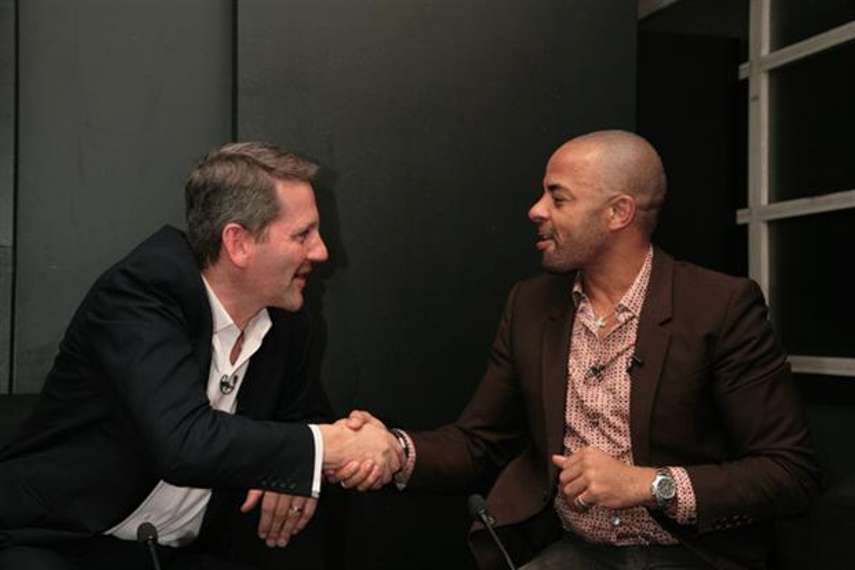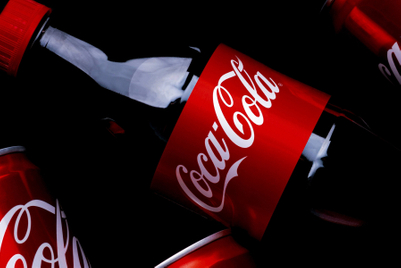
"We are creatively bankrupt," Coca-Cola’s Jonathan Mildenhall remembers being bluntly told by his new CEO as he arrived in Atlanta in 2006 to take up his job as vice president of global advertising strategy and content excellence.
Not anymore. Cannes Advertiser of the Year in 2013, and winner in recent years of more than 100 Cannes Lions, Coca-Cola is now, says Mildenhall, a company that believes ‘creativity is a competitive advantage’.
It’s a company so comfortable in its skin that it’s happy to make its Content 2020 ‘creative thoughtware’ credo public.
And it’s a company, Mildenhall is quick to point out, whose share price has risen 130 pc to an all-time high since its embrace of creativity. "Creativity and commercial success go hand in hand," says Mildenhall. "The data is bullet proof."
Things have changed for Mildenhall too, promoted recently to senior VP of integrated marketing communications and design excellence for North America.
The consummate professional – swigging from a bottle of Coke beside some artful product placement – a relaxed Mildenhall was hosted by IPA (UK) president Ian Priest on 20 November 2013, for a conversation about creativity and creative leadership in front of 120 guests at Imagination.
The evening was part of Priest’s ADAPT agenda designed to promote commercial creativity. Mildenhall is also a member of the IPA’s Client Council.
The key to Coca-Cola’s change, says Mildenhall, was understanding that creativity is everyone’s responsibility and remit, individually and inside the organisation. "To change, Coke had to take creativity in the widest sense back from the agencies. It couldn’t belong only to the hairy elites of agency creative departments," he says.
Creative credo
"We couldn’t change what was in the bottle, but we could innovate around it [in our communications]," Mildenhall says of the creative principles he developed with his team and agencies and then took out to 200-plus markets. They are:
- Move from one-way storytelling to multidimensional storytelling
- Make every communication worth sharing
- Creativity is seeing and thinking what no-one else has
- Make every communication culturally relevant
- Use data – it’s the soil where ideas grow
- Be flexible enough to have conversations in the marketplace
- It’s not enough to create content for yourself; let your fans and customers create content (80pc of the content on Coke’s YouTube channel is created by consumers
- Employ creative destruction – to achieve new success you have to kill old processes, no matter how effective previously
Money and time
Mildenhall also pushed out other significant changes that drove creativity. One was shifting agency remuneration towards value rather than output, so now an agency can earn a margin of up to 30pc on projects that meet targets. "Equally," he says, "if the work performs badly, an agency can lose all its margin entitlement. Overall, though, we share the risk and double the reward."
The second was the allocation of budgets and time to innovation – in which 70pc of the budget and 50pc of the time goes on low-risk, proven ideas; 20pc of the budget and 25pc of the time on innovation around those low-risk ideas; and 10pc of the budget and 25pc of the time on high-risk ideas.
Creative leadership
Stressing that there are no management guides or textbooks on managing creatives or creativity, Mildenhall spelt out his nine principles of creative leadership…
- Creative directors are the soul of the company or brand they lead
- They amplify the creativity in everyone they work with
- They distort reality and make the impossible seem possible
- They are relentlessly optimistic, exuding positive, infectious energy
- They create a culture of curiosity, never stop asking or learning, and have the best questions
- They establish trust, honesty and belief by giving away credit
- They make unpopular calls to do the right thing by the work
- They inspire risk
- They celebrate success and failure.
A man completely on top of his subject, Mildenhall took questions from the audience and gave his thoughts on a wide range of subjects.
On embracing effectiveness: "The IPA Effectiveness Awards were essential schooling for me. Agency briefings start with the financial and commercial imperatives."
On the future of TV: "It’s alive if you treat it as a new medium and fuse it with new technology," he says, citing the Hong Kong ‘Chok’ promotion with which Coke linked an app that allowed teenagers to interact.
On allowing competitors, including Pepsi, to see its Content 2020 strategy: "They could see what we were doing, but they didn’t have our brands or our people."
On content marketing: "It’s the substance of brand engagement and conversation…content should be wrapped around everything."
On global vs local advertising: "There’s always a tension. Currently, 70pc of our work originates from global insights and core creative ideas that can’t be replicated by local consumers, and 30pc from local insight."
On transforming Coke’s creative culture: "The trick is to find people who want to change and lead the way, rather than force it on them."
On the current jewel in Coca-Cola’s crown: "It’s ‘Small World Machine’, made by Leo Burnett, about bringing people in India and Pakistan together, allowing them to communicate without words."
Mildenhall ended the evening by summing up how to achieve better commercial creativity: "It’s not ‘us and them’; you have to take the ‘we’ approach.
(Mildenhall is currently writing a book, ‘Creativity is King’, to be published soon. His Twitter handle is @mildenhall or you can find him here (http://jonathanmildenhall.tumblr.com/) and here (http://www.jonathanmildenhall.com/).
This article first appeared on www.marketingmagazine.co.uk


.jpg&h=334&w=500&q=100&v=20250320&c=1)

.jpg&h=334&w=500&q=100&v=20250320&c=1)
.jpg&h=334&w=500&q=100&v=20250320&c=1)

.jpg&h=334&w=500&q=100&v=20250320&c=1)





.jpg&h=268&w=401&q=100&v=20250320&c=1)
.jpg&h=268&w=401&q=100&v=20250320&c=1)



.jpg&h=268&w=401&q=100&v=20250320&c=1)
.jpg&h=268&w=401&q=100&v=20250320&c=1)
